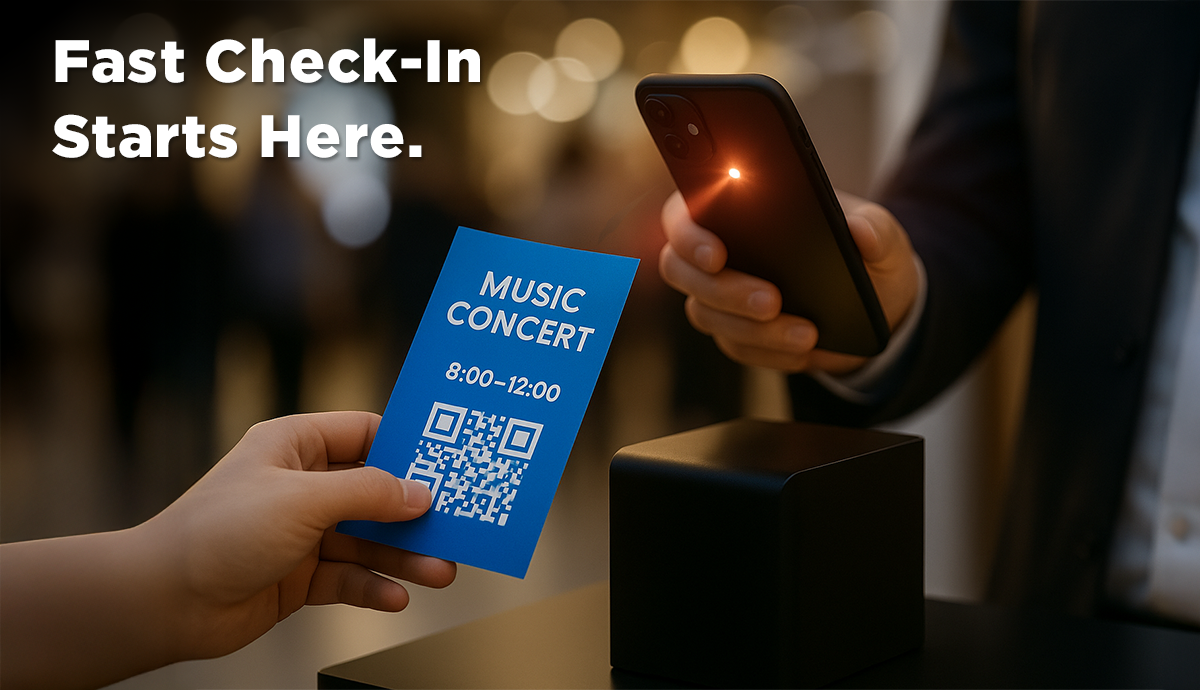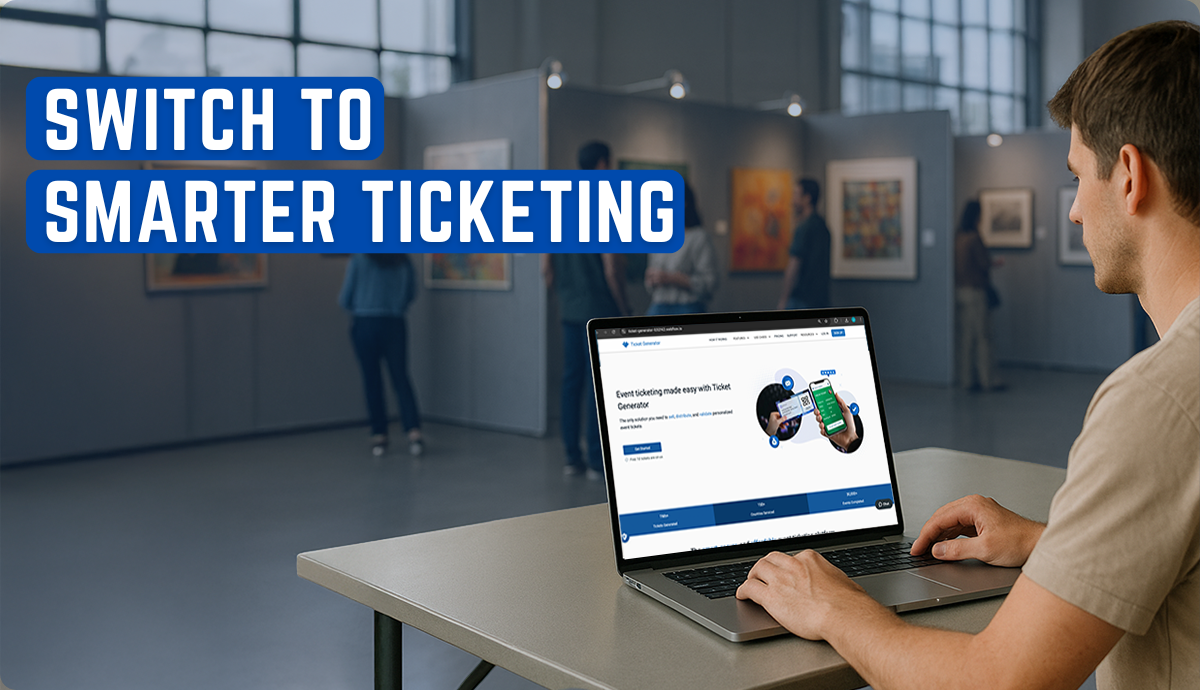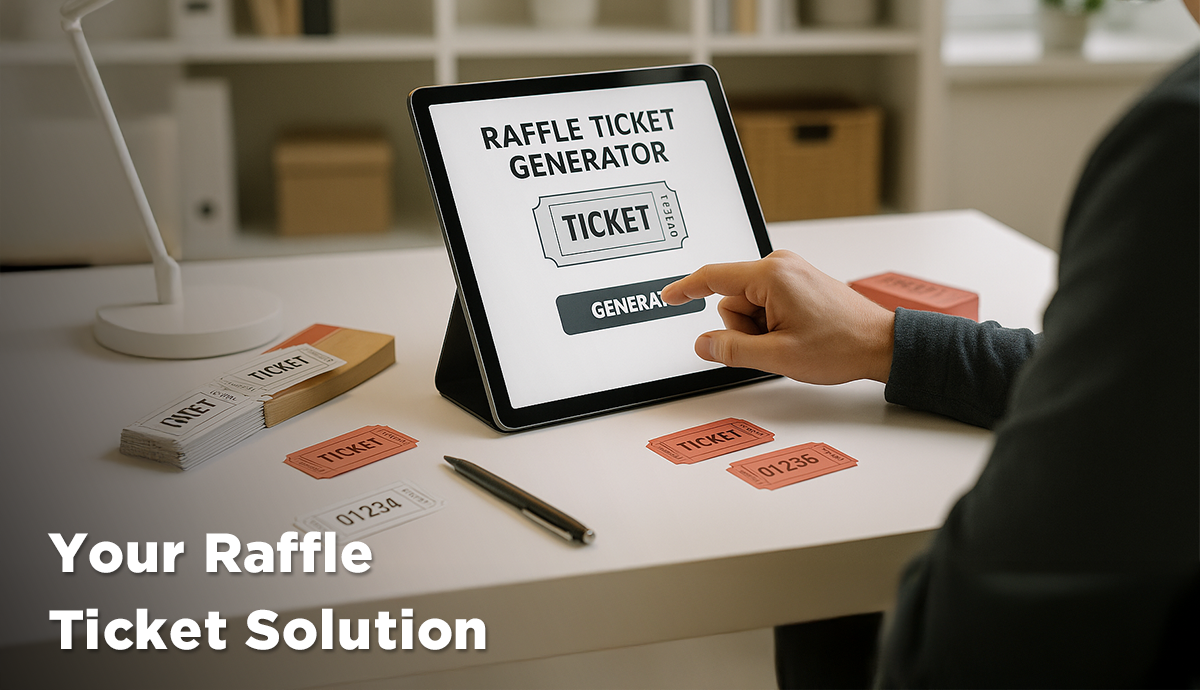You must be having a hectic event ahead if you’re learning how to make paper tickets.
We’re here to make the process easier as we break down the technicalities of making paper tickets.
By the end of this article, you’ll learn how to make a high-quality, professional-looking paper ticket.
You’ll also learn the techniques and tools that’ll help you make paper tickets for events.
A. How to make paper tickets in 7 easy steps
1. Selecting the right ticket paper
Selecting the right paper for your event tickets is often a tricky choice to make. There are many options to choose from in the market.
You can use cardstock, thermal paper, recycled paper, or even specialty paper.
You’ll learn more about the pros and cons of each type of ticket paper later in the article.
2. Cut the paper into the right size
To cut your paper into tickets, you’ll need a sharp exacto knife and a ruler.
Most event tickets follow a typical size of 2" x 5" or 2.5" x 5.5". So, you can score the paper along these dimensions using a ruler and an exacto knife.

Scoring paper helps in getting straighter and cleaner edges.
Pro Tip: To protect your surfaces and prevent your blade from dulling, you can use a self-healing cutting mat underneath.
Large printing presses also use paper trimmers to cut multiple tickets at once.
3. Format of an event ticket
Depending on the type of the event, the content of your event ticket will change. However, you can consider adding these generic details to your event tickets:
- Event name
- Date and time of the event
- Day (in case of multi-day events)
- Location
- Ticket number
- QR codes for verification upon scanning
- Sponsor logos
Pro Tip: You can use templates on Ticket Generator that come with a unique scannable QR Code.
4. Writing vs printing event tickets
This article will teach you how to make paper tickets by hand and by printing technology.
If you’re writing the content on your tickets by hand, then prefer using a fine-tip gel pen (0.3mm to 0.5mm). This will give you the neatest and most legible handwriting.
You can also use calligraphy pens to add an elegant touch to your paper tickets. This is useful for formal events such as balls and even weddings.
If you’re going to print your event tickets, then go for a laser printer for the best quality.
Laser printers ensure vibrant text and design. Even among printers, choose the one with the highest resolution, at least 1200 x 1200 dpi) for the best print quality on cardstock.
5. Decorate your paper tickets for events
If designing is not your forte when you’re learning how to make paper tickets, read this carefully.
Event tickets should generally be as minimal as possible. However, to make them visually striking, you may add these elements:
- A dark background color so that the text on top is visible
- Thin borders can also make the design more sleep
- Use relevant icons or graphics to make event tickets less boring

Avoid making these design mistakes while making event tickets:
- Avoid using more than two fonts in your design
- Make sure the text and backgrounds have enough contrast to ensure legibility
- While designing, you use a big screen but the printed tickets are often smaller. So make sure to print sample tickets to test your design first
6. Add tear tabs to event tickets (optional)
To make your event tickets functional on the day of the event, you can perforate the edges.
This makes it easier to tear and distribute tickets in real-time. Alternatively, you can have pre-cut tickets. However, with pre-cut tickets, it’s hard to keep inventory and track of tickets distributed.
For adding perforated edges or tear tabs, you’ll need a scoring or perforating tool.
The scoring should be done along the edges of the ticket with a little bit of margin. The score should be deep enough to tear easily but not too deep for the tickets to fall apart.
Test the ticket by tearing gently to ensure the tickets come apart clean without damaging other tickets on the sheet.
7. Add finishing touches
Here’s how to make paper tickets look more professional:
- Laminate your event tickets to protect them from wear and tear
- If laminating is too expensive, you can also use clear adhesive sheets on top of your event tickets
- Double-check your tickets for silly mistakes
- Embed a functional and scannable QR code on event tickets for authorization before entry
- Use Ticket Generator to professionally dispatch event tickets via email, SMS, or Whatsapp as well
B. Types of paper used to make tickets
Here’s a breakdown of the types of paper you’ll consider while figuring out how to make paper tickets:
1. Thermal paper
It has a heat-sensitive layer that turns black when exposed to heat. These are easy to create, cheap, and fast.
However, the event content might fade after prolonged exposure to heat or sunlight. The color options are often limited to black and white.
Use it if you’re on a tight budget and need to print a lot of tickets quickly.

2. Cardstock
It is thicker and more durable paper than standard printing paper. This sturdy paper feels premium to attendees. You can create colorful visually-striking tickets with this paper.

3. Recycled paper
This is an eco-friendly option and might earn you more green points on your event.
However, they can have different textures and sometimes be more expensive than virgin paper.

4. Specialty paper
This paper has a unique color, texture, and finish. For example, it can be metallic, textured, or colored.
Use this for very high-end events or when you need to make a lasting expression. Keep in mind that tickets made with specialty paper are very expensive to produce.

Pro Tip: Whichever paper you choose, make sure it's compatible with the printer you have access to.
C. How to make paper tickets more secure?
Your event tickets should at least have one of these features for them to be able to dodge fraud:
- Serial number—This is the easiest way to add a layer of security to your event tickets. The only catch is that they’re not easily trackable
- RFID—This is a modern technology where a radio-frequency identification chip that stores information. They are used for contactless entry
- QR Codes—QR codes are the easiest way to make tickets secure. They can also be used for tracking attendance or access control
If you need a handy tool to design paper tickets with QR codes, head to Ticket Generator.
D. How to make paper tickets for different types of events
This guide on how to make paper tickets is not one size fits all. Here are special instructions based on the type of event you’re organizing:
1. Public events
Paper tickets for concerts, festivals, and shows are often rectangular. They can be horizontal or vertical, based on your design and aesthetic. A6 or A5 size provides enough space for event details, artist information, and QR codes.
2. Sporting events
Horizontal rectangular tickets are the standard. Sizes A6 and A5 are preferred. This leaves enough space for team logos, stadium maps, seat information, and sponsor branding.
3. Conference/seminar/workshop
You can either go for vertical rectangular paper tickets or business card-sized tickets.
Just leave enough room for attendee's name, affiliation, and a QR code for scanning and tracking.
4. VIP events
For VIP tickets, you can explore shapes other than rectangular. Go for rounded corners for a premium feel.
Use textured or metallic paper for a premium feel. You can also go premium printing techniques such as embossing or foil stamping.
5. Formal fundraises/galas
You can have both rectangular or square tickets. A6 or A5 size is common. Add rounded corners for a luxurious feel.
6. Raffle
Smaller sizes like business card or slightly larger are preferred. Tear tabs are essential. Since these tickets are printed in bulk, going for standard paper or recycled paper is ideal.
7. Season tickets/passes
Since season passes last for long durations, you need durable cardstock or plastic tickets. Credit card-sized tickers or slightly larger ones are ideal. These tickets often include the holder’s photo or some type of identification.
E. That’s all about how to make paper tickets!
By following our detail steps and tips, you can create professional and durable paper tickets.
From selecting the right paper to adding features such as QR codes, we hope all questions were answered.
To save time on all your event ticketing needs, you can sign up for our newsletter below.
F. FAQ
1. What materials do I need to make paper tickets for events?
Here’s a list of tools and materials needed for creating high-quality paper tickets:
- 216 gsm to 297 gsm cardstock
- Ruler
- X-acto knife
- Scissor
- 0.3mm or 0.5mm fine-tip pen or marker
- Laser or inkjet printer
- Stamp (optional)
- Laminator
2. How to choose the right paper for event tickets?
There are many papers to choose from when you want to create paper tickets. You can go for thermal paper, cardstock, recycled paper, or even coated paper. However, you should keep in mind the following before choosing it:
- Make sure the paper is compatible with the type of printer you have (thermal, inkjet, or laser)
- Balance the cost of your paper with your budget as a simple change can cost a lot
- If you need the tickets to be durable, go for cardstock or coated paper
3. Which is the best paper for event tickets?
Cardstock is the most popular choice. It is the perfect balance between quality, durability, and cost-effectiveness.
If you’re learning how to make paper tickets, source your cardstock at the best price from a local market.









.gif)





